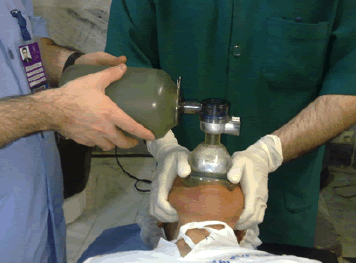
Vanderbilt researchers want to change a brief but dangerous procedure that occurs more than a million times a year in U.S. hospitals. A study published this week in the New England Journal of Medicine claims to settle a 50-year controversy over how to place a breathing tube.
Before having a tube stuck down their throat, patients are given a quick dose of medication to make them a groggy. But it takes one minute to kick in. During that time, breathing slows. Roughly 40 percent end up with dangerously low oxygen levels, and about 2 percent go into cardiac arrest.
Dr. Jonathan Casey, a critical care fellow at Vanderbilt University Medical Center, tested whether pumping air into the lungs with with a simple bag mask helped at all. As a physician, it was a step he almost always avoided.
“A lot of people thought this can’t be effective. There’s no way that squeezing that bag for one minute would be that effective at preventing low oxygen levels,” he says. “And I think even we were surprised at how effective it was.”
The rate of severely low oxygen levels was cut by half, and there were very few complications caused by the bag mask. This is important because some physicians are taught that a bag mask forces air into the stomach and causes patients to vomit and choke.

Casey says, for his unit at Vanderbilt, the evidence is enough to change their practice. He says emergency physicians, who often deal with patients who may have come in with full stomachs, remain circumspect and could still use some convincing.
“There are entire textbooks that have entire chapters devoted to how you manage this one-minute period. And some of them make very strong recommendations to never do this; some of them make very strong recommendations to do this,” Casey says. “I really hope and think this should change practice for a lot of people.”
The
research was conducted across seven intensive care units across the U.S. and funded by Vanderbilt’s translational research program, meant to test conventional wisdom in the hospital. A previous study looked at the
over-reliance on saline rather than balanced fluids.


